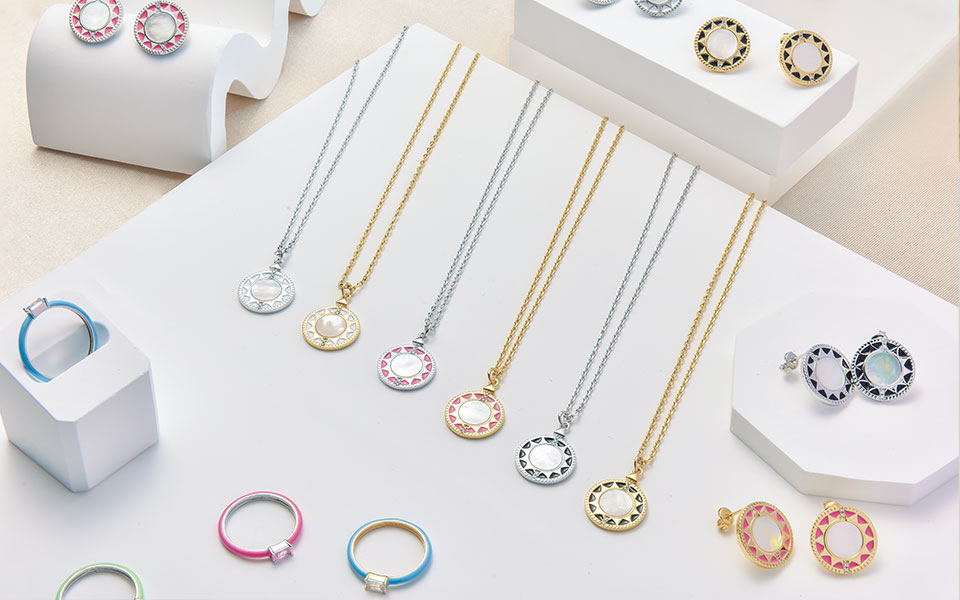With stunning colors and shiny gold lines, there’s no piece of jewelry better than those made from enamel. Whether it’s a necklace pendant, bracelets, or a set of earrings, enamel jewelry always makes a bold statement.
Enamel jewelry has been around for ages, but recently, its popularity has been surging immensely. It’s commonly loved because of its vintage look yet very modern and fashionable. Are you looking for a piece of jewelry that gives you the best of both worlds? Enamel jewelry is the best option.

Keep reading to learn everything you need to know about enamel jewelry.
What is Enamel Jewelry?
For centuries, enamel has been used to make jewelry. It’s one of the oldest forms of decorating jewelry surfaces and it’s sometimes called names like porcelain enamel, painted enamel, and vitreous enamel. Its versatility makes it stand out among the many options available to jewelry lovers, complementing every style, ranging from delicate to bold.
Enamel jewelry is much like art, as the beauty and artistic quality of the piece is very much dependent on the skill of the enameller. It requires so much skill and expertise, making well-crafted pieces to be highly sought after and valued.
Historically, jewelry enameling has been used to replicate both precious and semi-precious gemstones without the demanding and expensive process of mining, cutting, and setting of precious stones. It captures the color, vibrancy, and beauty of gemstones without much labor.
How is Enamel Jewelry Made?
Enamel jewelry is made with a base metal and powdered glass which can be in any color. It involves fusing the powdered glass to a base metal at extremely high temperatures. The process is quite temperamental and requires some level of expertise to get it right, and the color of the enamel powder at the start is not what the finished product will look like. This is because the heating process changes the color and transparency.
Basically, the higher the heat, the more translucent and vibrant the enamel jewelry will be. Lower temperatures, on the other hand, result in opaque enamel pieces with lower color vibrancy and a higher probability to get damaged.
The final quality of the enamel jewelry is largely dependent on the oxide content of the base metal, the degree of temperature, and the expertise of the enameller.
How to Clean Enamel Jewelry?
Enamel jewelry is pretty easy to clean and care for. It’s a durable piece that doesn’t get damaged easily. To clean and maintain it, just follow the same processes you would apply to other types of jewelry.
- Make a solution of water and mild liquid soap
- Dip a soft, neat microfiber cloth or brush into the solution and clean the enamel jewelry. Gently remove any dust or grime on the piece.
- Rinse the jewelry thoroughly in clean, warm water. Make sure any soap residue is not left on the piece.
- Dry with a lint-free cloth and keep in a safe storage.
In case of repairs, find a professional enameller with experience in making enamel jewelry to prevent further damage.
Can Enamel Jewelry Get Wet?
Yes, enamel jewelry can get wet, resulting in serious damages. The making process involves fusing powdered glass to base metals like copper, which are usually reactive and get discolored when exposed to water. The oxide content of these metals are often weak and less lustrous, which demands that the jewelry shouldn’t be worn when bathing, swimming, or sweating heavily.
Why is Enamel Jewelry So Expensive?
There are three major reasons for this. Firstly, the cost of material used for its production. Secondly, the process of its creation is quite labor-intensive. Thirdly, the finished product is very delicate, requiring careful handling and maintenance.
Enamel jewelry is made from glass, which is a very expensive material. Also, the manufacturing process is demanding and it can even take a skilled enameller many hours to create. In addition, the finished product is so delicate, requiring that it’s handled with care and properly maintained, which adds to the overall cost.
Popular Enamel Jewelry Designs
There are several designs of enamel jewelry and each of them is attributed to how they are worn in various cultures. Here are the most popular designs that showcase enamel details in jewelry:
- Plique a Jour: This is a French word that translates to “Let the daylight in.” This design allows the light to get in from behind, making the jewelry glow from within. This design is achieved by adding the powdered glass to various sections in the metal. Once it connects with the metal, it will suspend from within the wire details. The end result will appear like a delicate stained glass.
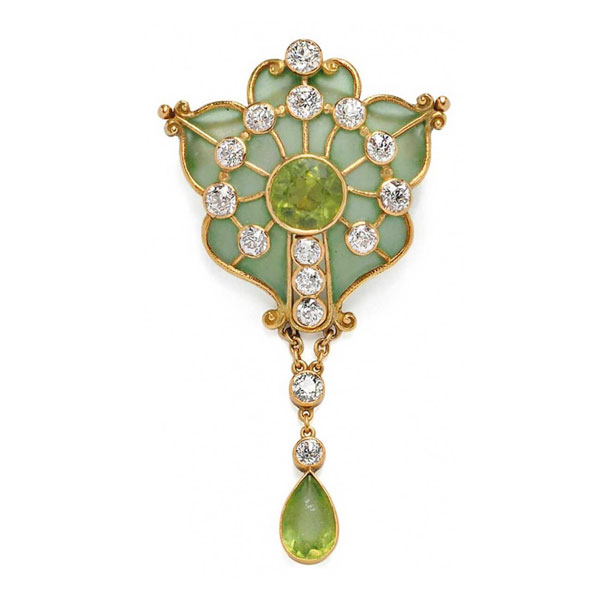
- Champlevé: This design also originated in France. It involves the jeweler making several hollows that will be filled with enamel and put under heat. The final result of this technique is a jewelry with vibrant colors and texture.
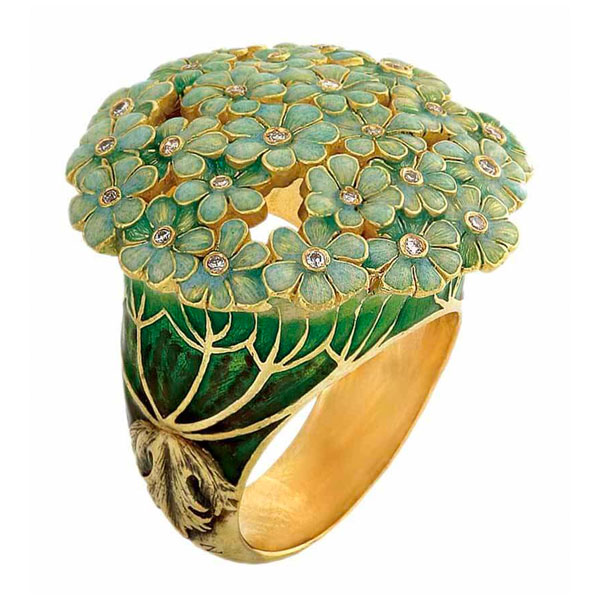
- Cloisonné: This design involves constructing wire frames that are filled with enamel in different shades, then, they are heated. At the end of the day, the wires remain visible, outlining the enamel pattern. Cloisonné is the ideal option for jewelry lovers that seek to explore different patterns.
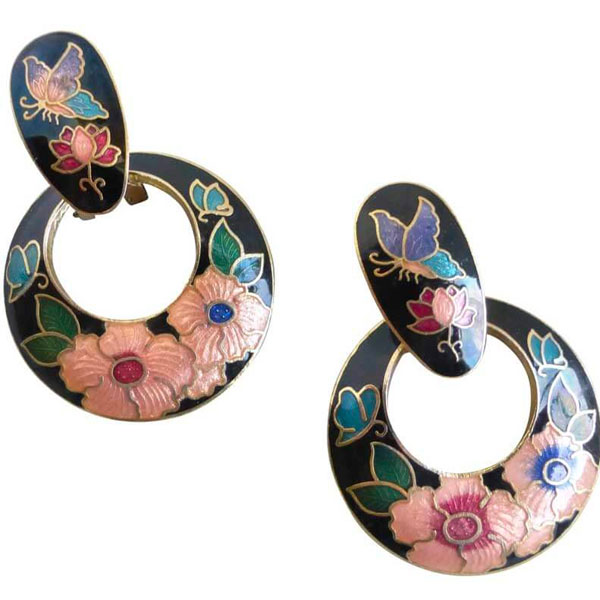
- Meenakari: This design is similar to Cloisonne, however it is more colorful. Also, the color depends on the region and culture where it’s worn. While Persia’s Meenakari is blue, India’s Meenakari is a blend of multiple colors. Both types are quite clad in detail, offering vibrancy and color luster for people who wish to be unique.
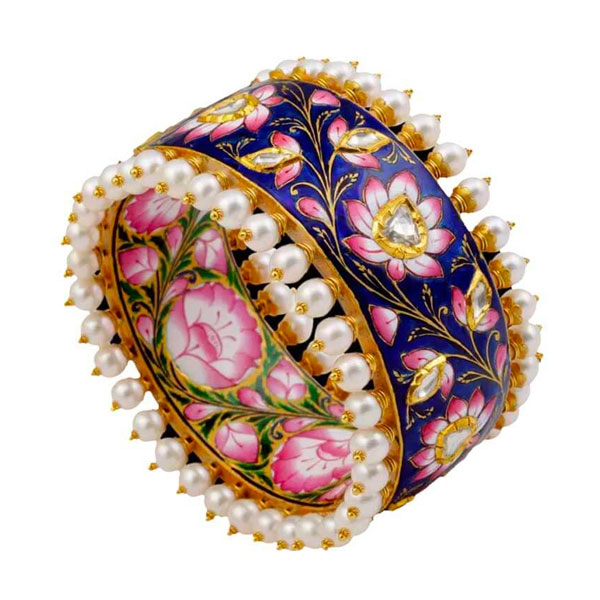
- Basse-Taille: This is a style of enamel jewelry with a shallow press or carving in the metal that is filled with powdered glass. The carving depths correspond to different color intensity, with deeper parts containing more enamel powder. Basse-Taille supports intricate designs, with many colors and attributes across the jewelry.

- Guilloché: This design is similar to Champleve, as it uses transparent enamel to show styles etched in precious metal. After the jewelry is fired in a kiln, the original etchings under the enamel are visible, serving as an additional design feature.
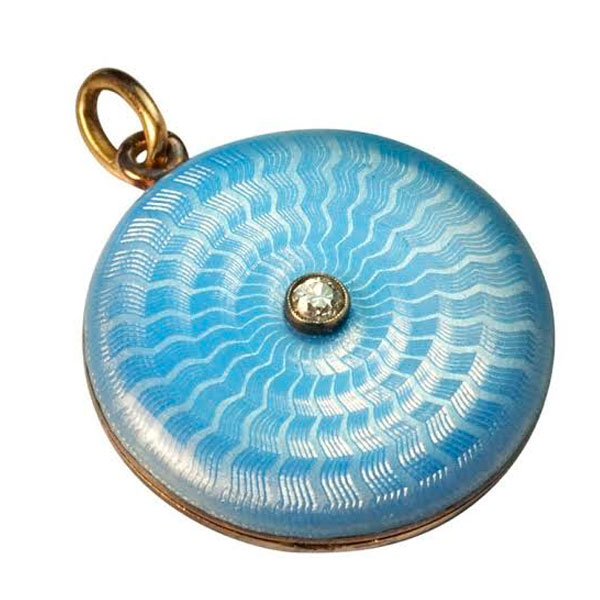
- Grisaille: This is a form of painted enamel composed of various glass layers to create a unique effect. The production process begins with a layer of black enamel and a design painted over-top. As the glass layers are placed on one another, the black becomes darker and more opaque, resulting in a distinct and captivating finish.
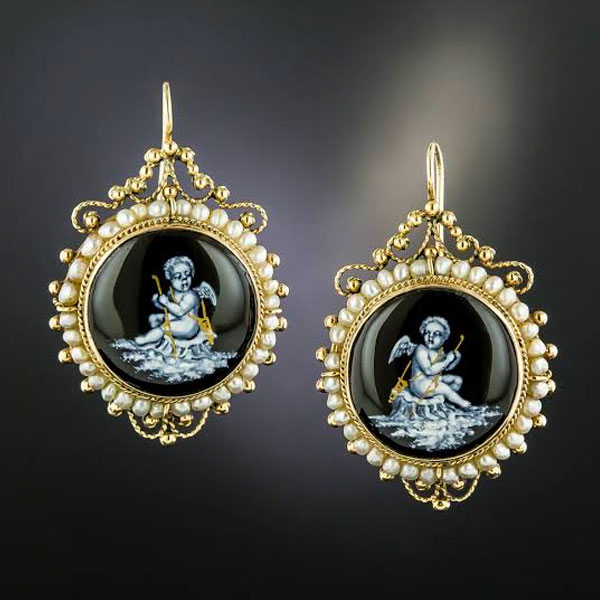
Key Takeaway
Enamel jewelry is a very colorful and versatile design that has been in circulation for centuries. It is fashionable, modern, adds color to neutral attires, and available in a wide variety of styles and colors. Also, it is perfect for several applications, such as costume and fine jewelry and can seamlessly function as a vintage piece.
